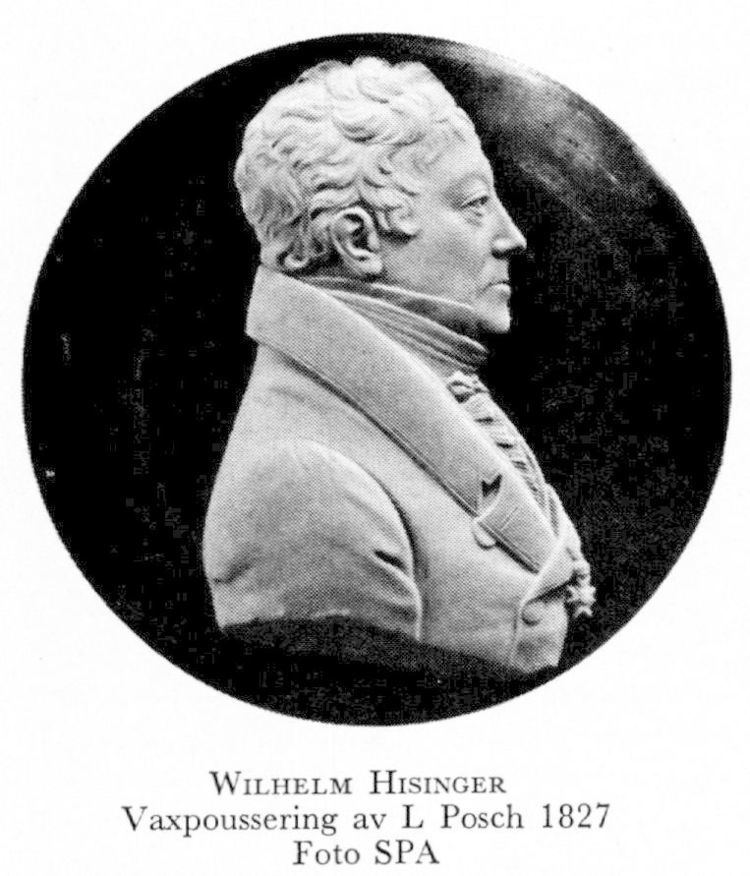Nationality Swedish Role Physicist Parents Vilhelm Hising | Author abbrev. (botany) Name Wilhelm Hisinger | |
 | ||
Born 23 December 1766Vastmanland, Sweden ( 1766-12-23 ) Grandparents Margareta Frodbom, Mikael Hising Fields Chemistry, Physics, Geology, Mineralogy | ||
Great-grandparents Carl Hising, Barbro Petre | ||
Wilhelm Hisinger (December 23, 1766 – June 28, 1852) was a Swedish physicist and chemist who in 1807, working in coordination with Jöns Jakob Berzelius, noted that in electrolysis any given substance always went to the same pole, and that substances attracted to the same pole had other properties in common. This showed that there was at least a qualitative correlation between the chemical and electrical natures of bodies.

In 1803, in separate laboratories, Martin Heinrich Klaproth in one, and Berzelius and Hisinger in another, the element Cerium was discovered, which was named after the newly discovered asteroid, Ceres. Discovered nearly simultaneously in two laboratories, though it was later shown that Berzelius and Hisinger's cerium was actually a mixture of cerium, lanthanum and so-called didymium.
Hisinger was elected a member of the Royal Swedish Academy of Sciences in 1804.
The mineral hisingerite, an iron silicate, with the formula Fe3+2Si2O5(OH)4·2H2O, is named after Hisinger.
There is also Aluminian Hisingerite which is when one of the iron atoms is replaced by aluminum.
The mountain of Hisingerfjellet in Nathorst Land at Spitsbergen, Svalbard, is named after him.
